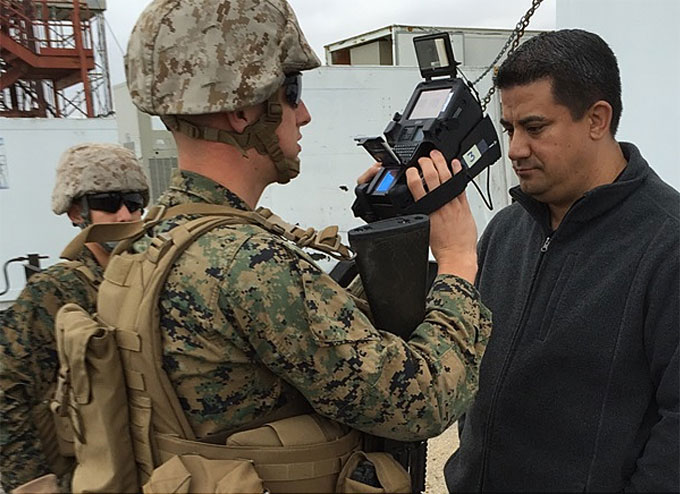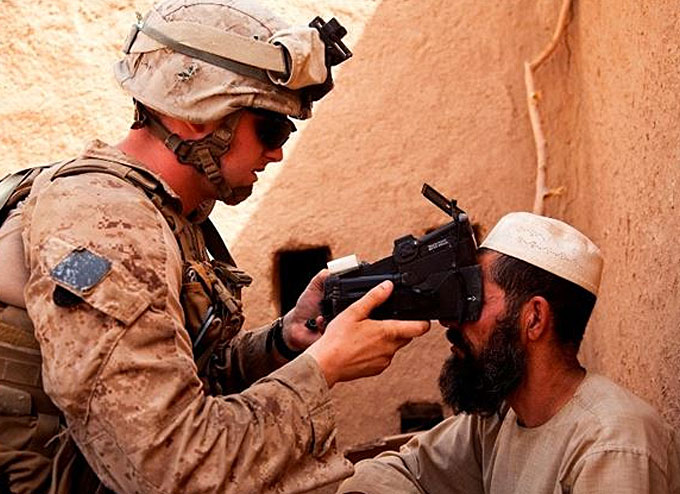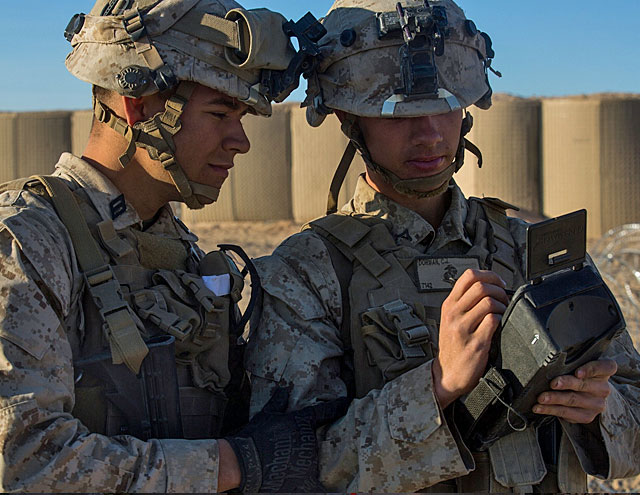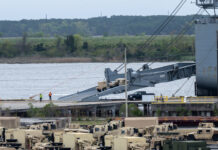
By Kaitlin Kelly, Marine Corps Systems Command
In September, Marine Corps Systems Command completed fielding a new biometrics system to help deployed Marines identify and track the movement of individuals encountered on the battlefield, conduct entry control point operations, and determine who is a friend or foe.
Identity Dominance System-Marine Corps, or IDS-MC, is a simple and effective biometric data collection, matching, and transaction management system that is composed of a handheld device, known as the Secure Electronic Enrollment Kit, and a laptop computer with specialized biometric collection sensors and a badge printer.
(In September, we completed fielding of the Identity Dominance System-Marine Corps to help deployed Marines better determine who is friend of foe. Courtesy of the Marine Corps Systems Command and YouTube. Posted at Dec 11, 2017)
IDS-MC replaces the Biometric Enrollment and Screening Device to assist with detainee management and questioning, base access, counterintelligence screening, border control and law enforcement operations.
Unlike the BESD, IDS-MC’s transactional data management capability conveniently collects, shares, matches and stores identity information immediately, allowing the user to connect to the Tactical Data Network, manage and submit collected data and receive responses and feedback on submissions.
This improves on the legacy system, which could take days to download data via a CD or DVD, and then Marines had to transmit that vital identity information from a separately connected computing system.
This process was not only logistically cumbersome, but the latency in data submission and response receipt created force protection mission challenges for the Marine.
“The IDS-MC is more convenient because it connects directly to the Marine Corps’ Tactical Data Network, allowing Marines to share data and submit biometrics and receive the responses effortlessly,” said Sarah Swift, Identity Operations Team lead for Biometrics and Forensics Systems at MCSC.
To develop the IDS-MC, the Identity Operations Team identified a need for a portable, easy-to-use system via feedback from Marines in the fleet.
The system was created to directly address the specific needs of Marine Expeditionary Forces in a contested environment.

scans an Afghan man’s retinas using a Biometric Enrollment and Screening
Device (BESD) while conducting counter-insurgency operations in Helmand
province, Afghanistan. (Image courtesy of U.S. Marine Corps)
Using IDS-MC, Marines collect biometric data by capturing a person of interest’s fingerprints, iris and face images.
That data can then be matched with pre-existing information onboard the system, either on a BEWL or other lists, such as an access control list used for base force protection.
The IDS-MC also has the capability to capture location, biographical and any other reference data that may be useful to an intelligence analyst now or in the future.
The IDS-MC user submits biometric information to the Department of Defense’s Automated Biometric Identification System authoritative database via a web portal, allowing data to be shared across the Biometrics enterprise, and also aiding in the creation of the DoD extensive Biometric-Enabled Watch List, or BEWL.
The BEWL contains an ongoing collection of biometric intelligence that helps users determine what actions to take immediately when they encounter a person of interest.
Additionally, the Marine Corps Intelligence Agency Identity Intelligence Analytical Cell, or MCIA I2AC, reviews the IDS-MC user’s biometrics submissions and other collected biographical and reference data, and provides direct support to the submitting Marines, providing them analysis reports and intelligence products for potential Persons of Interest.
“The BEWL helps Marines match nefarious people they might encounter anywhere in the world to the ones listed in the database,” said Swift.
“We support Marines by providing them the most up to date BEWL, and then they can collect a person’s biometrics.”
“If it shows up in the system as a match, they’ll be notified with a pop-up on the device.”
“All of this provides the Marine Air-Ground Task Force with the ability to rapidly and efficiently identify people encountered in the battle space in support of targeting, military intelligence, law enforcement operations and force protection,” said Maj. Keystella Mitchell, project officer for IDS-MC.

Marine Regiment, 2nd Marine Division, utilizes the IDS-MC to conduct
personnel searches in Hidalgo City. (Image courtesy of the U.S. Marine
Corps)
In addition to identifying known threats, the system also collects information on potential future threats and stores it for future reference.
If an individual is a match in the system, Marines are able to immediately receive that information and use it to inform on-the-spot decisions.
“It can be difficult to determine who the enemy is because they truly blend in with their surroundings,” said Mitchell.
“The IDS-MC is a game changer and force multiplier as a connected system for the commander on the ground because they can identify the threat and take action much quicker than before.”
In addition to the planned fielding of the IDS-MC system, an urgent system quantity shortfall was identified by the Special Purpose Marine Air-Ground Task Force and Marine Corps Forces Central Command customers.
This required an unplanned increase in the number of production assets which required a fielding re-prioritization strategy, additional rapid procurement and integration.
The Identity Operations Team adapted its strategy, and within two months of validating the requirement, it fielded the additional systems.
The fielding of the IDS-MC system has led to a 154 percent increase in the biometric collections submitted to MCIA I2AC and resulted in 11 watch list hits in just the first month of fielding.
The IDS-MC is managed by the Identity Operations Team which falls under Command Element Systems at MCSC.
Original post http://www.marines.mil/News/News-Display/Article/1394036/marine-corps-fields-game-changer-biometric-data-collection-system/
















